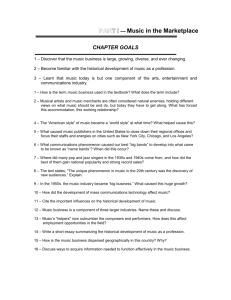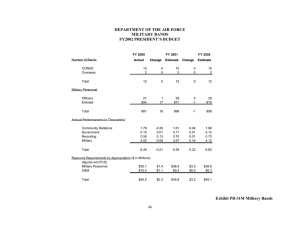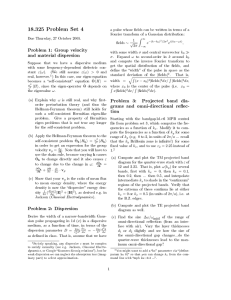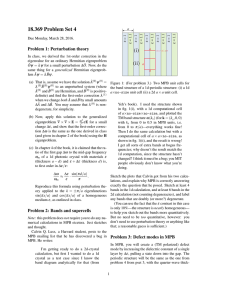18.369 Problem Set 5 Problem 1: Group Velocity and Material Dispersion
advertisement
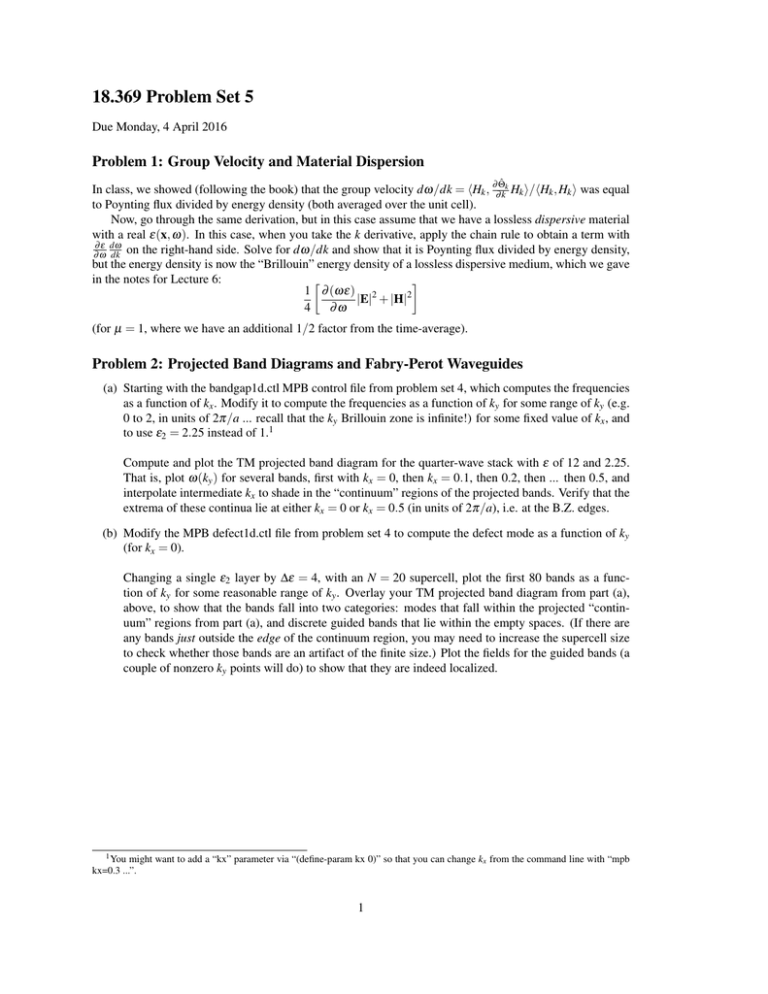
18.369 Problem Set 5 Due Monday, 4 April 2016 Problem 1: Group Velocity and Material Dispersion In class, we showed (following the book) that the group velocity dω/dk = hHk , ∂∂Θ̂kk Hk i/hHk , Hk i was equal to Poynting flux divided by energy density (both averaged over the unit cell). Now, go through the same derivation, but in this case assume that we have a lossless dispersive material with a real ε(x, ω). In this case, when you take the k derivative, apply the chain rule to obtain a term with ∂ ε dω ∂ ω dk on the right-hand side. Solve for dω/dk and show that it is Poynting flux divided by energy density, but the energy density is now the “Brillouin” energy density of a lossless dispersive medium, which we gave in the notes for Lecture 6: 1 ∂ (ωε) 2 2 |E| + |H| 4 ∂ω (for µ = 1, where we have an additional 1/2 factor from the time-average). Problem 2: Projected Band Diagrams and Fabry-Perot Waveguides (a) Starting with the bandgap1d.ctl MPB control file from problem set 4, which computes the frequencies as a function of kx . Modify it to compute the frequencies as a function of ky for some range of ky (e.g. 0 to 2, in units of 2π/a ... recall that the ky Brillouin zone is infinite!) for some fixed value of kx , and to use ε2 = 2.25 instead of 1.1 Compute and plot the TM projected band diagram for the quarter-wave stack with ε of 12 and 2.25. That is, plot ω(ky ) for several bands, first with kx = 0, then kx = 0.1, then 0.2, then ... then 0.5, and interpolate intermediate kx to shade in the “continuum” regions of the projected bands. Verify that the extrema of these continua lie at either kx = 0 or kx = 0.5 (in units of 2π/a), i.e. at the B.Z. edges. (b) Modify the MPB defect1d.ctl file from problem set 4 to compute the defect mode as a function of ky (for kx = 0). Changing a single ε2 layer by ∆ε = 4, with an N = 20 supercell, plot the first 80 bands as a function of ky for some reasonable range of ky . Overlay your TM projected band diagram from part (a), above, to show that the bands fall into two categories: modes that fall within the projected “continuum” regions from part (a), and discrete guided bands that lie within the empty spaces. (If there are any bands just outside the edge of the continuum region, you may need to increase the supercell size to check whether those bands are an artifact of the finite size.) Plot the fields for the guided bands (a couple of nonzero ky points will do) to show that they are indeed localized. 1 You might want to add a “kx” parameter via “(define-param kx 0)” so that you can change k from the command line with “mpb x kx=0.3 ...”. 1


